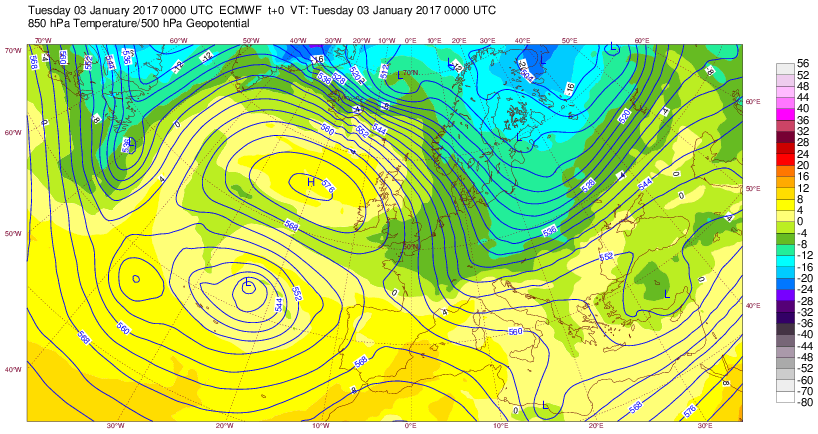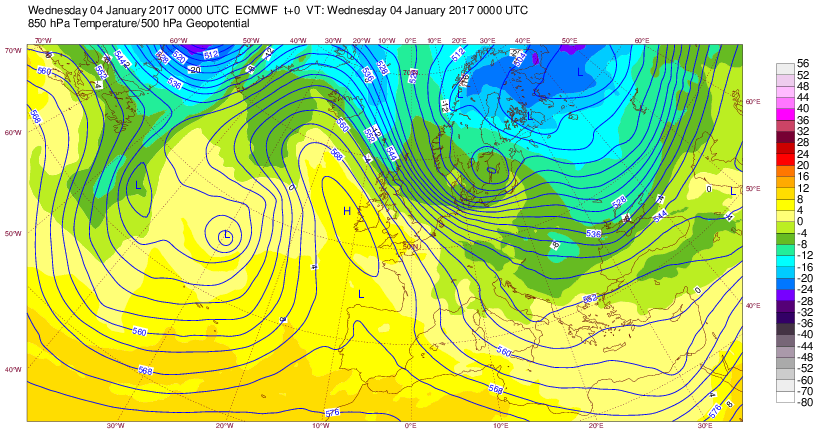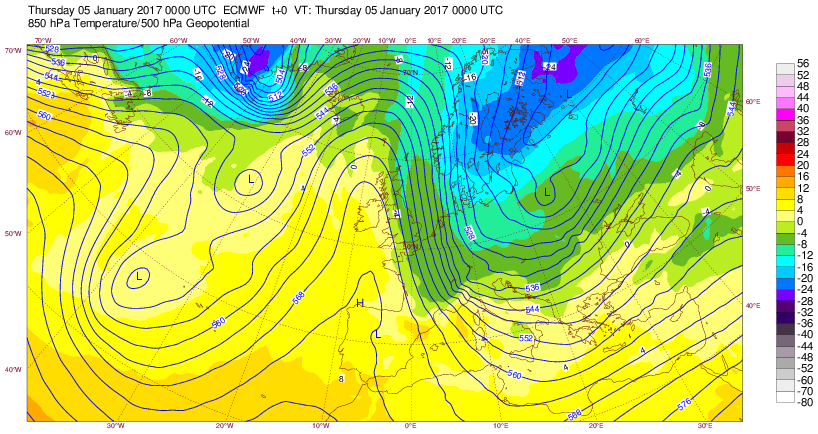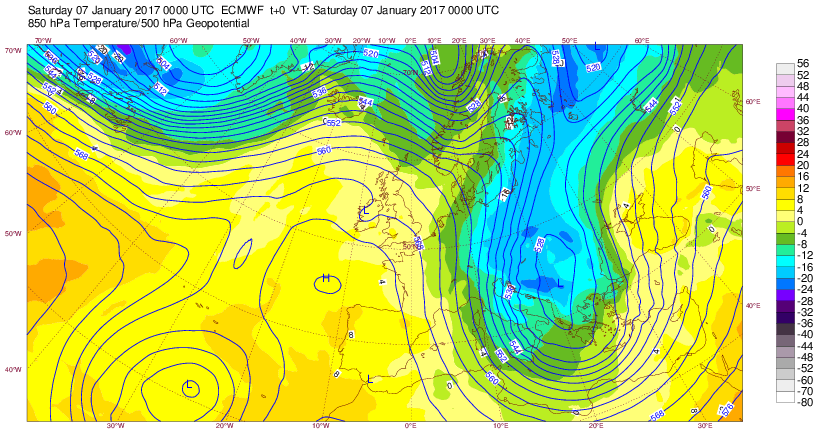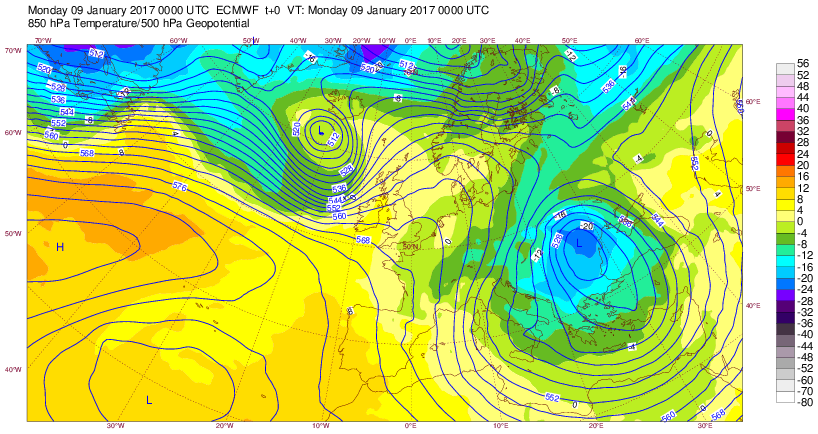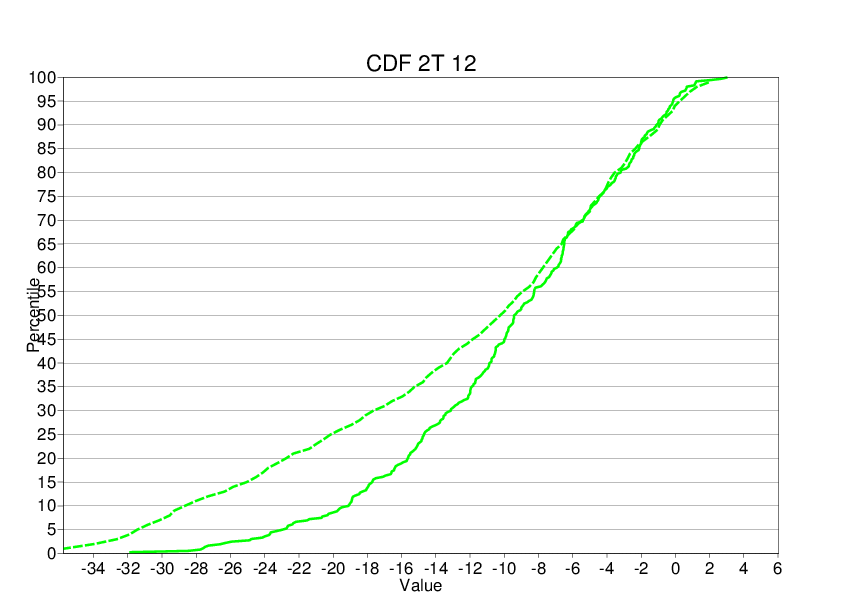Status:Ongoing analysis Material Status: Finalised Material from: Ivan, Linus
...
| Show If | ||
|---|---|---|
| ||
Discussed in the following Daily reports: |
Picture
1. Impact
...
| Excerpt |
|---|
During the first week of January the north-eastern central and south-eastern part of Europe was hit by a cold spell resulting in temperatures below 40C in Sweden and Finland and temperatures below 30C far down on the continent. In connection, many countries in southern and south-eastern Europe (e.g Italy, Greece and Turkey) were hit by severe snowfall. |
http://www.bbc.co.uk/news/world-europe-38546998
...
2. Description of the event
...
The plots below shows analyses of z500 and t850 for the period 2-9 January.
The plot above shows backward trajectories based on 850 hPa winds, starting on 1 January and ending on 9 January around Sofia . Under assumption of no vertical motion, the air parcels originated from north-eastern Russiaat 850 hPa level.
The plots below show EFI and SOT for 2-metre temperature day 1 as a proxy for analysis of how extreme the temperature were from 2 to 9 January.
...
The plot below compares the model climate from reforecasts (solid) and observation climatology (dashed).
During the cold period, heavy snowfall also hit south-eastern Europe, e.g Istanbul. The plots below show observations of precipitation on 7 and 8 January and the last forecast before each accumulation period.
3.3 ENS
The plot below show the evolution of ensemble forecasts (blue) and HRES (red dot) for 2-metre temperature in Sodankyla on 5 January 00z. The osbervation was around -40C (see above).
...
4. Experience from general performance/other cases
...
5. Good and bad aspects of the forecasts for the event
...

